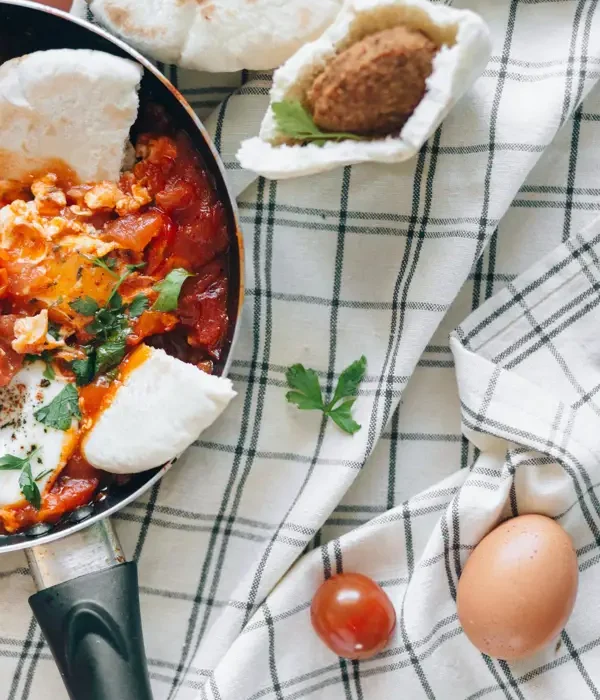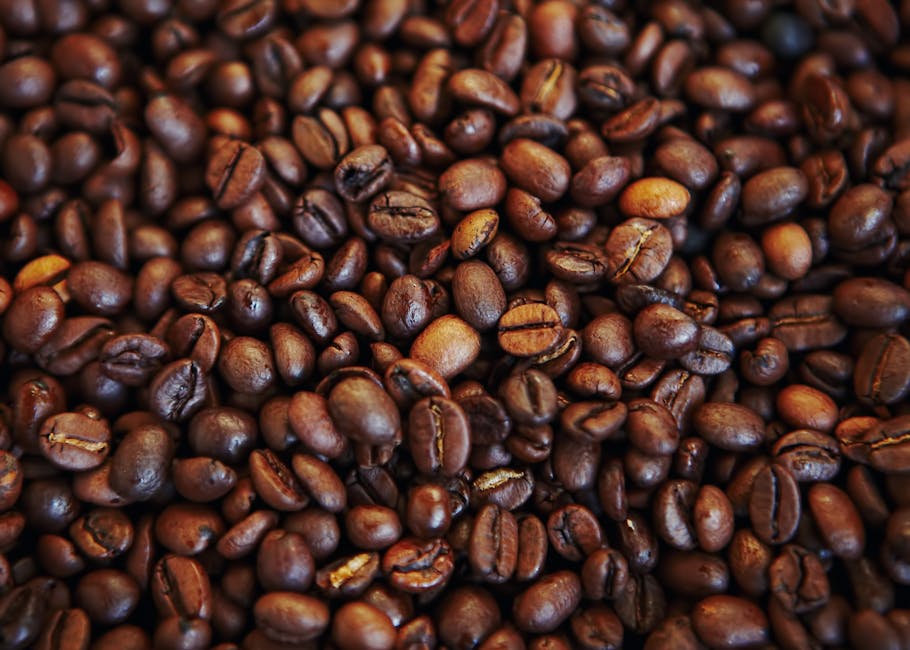The humble wrap, a culinary chameleon adapting to countless fillings and flavors, boasts a surprisingly rich and diverse history. While pinpointing a single origin is difficult, the concept of using flatbreads to enclose ingredients dates back millennia. Ancient civilizations across the globe, from the Egyptians with their pita breads to the Mexicans with their tortillas, embraced this simple yet effective method of food preparation. The modern wrap, as we know it, likely emerged from a confluence of influences, drawing inspiration from Middle Eastern flatbreads, Mexican tortillas, and the growing popularity of healthy, convenient meal options in the latter half of the 20th century. The rise of fast-casual dining and the increasing awareness of health-conscious eating further propelled the wrap into mainstream popularity.
The veggie wrap, specifically, represents a modern iteration, reflecting contemporary dietary trends. Driven by a growing global population increasingly concerned with health and sustainability, vegetarian and vegan diets are experiencing a significant surge in popularity. A 2023 report by the Plant Based Foods Association suggests a remarkable 17% increase in plant-based food consumption in the last five years alone, showcasing a clear shift in consumer preferences. This growing demand for plant-based options has directly influenced the popularity of veggie wraps, offering a delicious and convenient way to incorporate a wide array of vegetables into a single, portable meal. This resonates particularly strongly with younger generations, who are increasingly environmentally conscious and actively seek out sustainable and ethical food choices.
Culturally, the veggie wrap embodies a fascinating blend of culinary traditions. Its versatility allows for a diverse range of influences; from Mediterranean flavors with hummus and falafel to Asian-inspired wraps with tofu and kimchi, the possibilities are practically limitless. This adaptability makes it a truly global dish, reflecting the increasing interconnectedness of our world and the fusion of culinary styles. Furthermore, the simplicity of the wrap allows for personalization and creativity, making it an ideal canvas for expressing individual tastes and preferences. Whether it’s a quick lunch on the go or a more elaborate meal, the veggie wrap, with its vibrant colors and fresh ingredients, serves as a testament to the continued evolution and global appeal of this convenient and healthy food choice. The inclusion of hummus, a staple in Middle Eastern and Mediterranean cuisine, adds another layer of cultural depth, showcasing the rich tapestry of flavors that can be woven into this simple yet satisfying meal.
Ingredients and Measurements
This recipe yields approximately 4 generously filled veggie wraps. The quantities can be easily adjusted to suit your needs; simply multiply or divide the ingredient amounts proportionally.
For the Hummus (if making your own): If you prefer homemade hummus, you’ll need the following ingredients. Store-bought hummus is a perfectly acceptable shortcut, saving you about 20 minutes of prep time.
- 1 (15-ounce) can chickpeas, rinsed and drained thoroughly. Thorough rinsing is crucial for a smoother hummus.
- 1/4 cup tahini. Use good quality tahini for the best flavor.
- 1/4 cup lemon juice (about 1 large lemon). Freshly squeezed lemon juice is highly recommended.
- 2 cloves garlic, minced. Adjust garlic quantity to your preference.
- 1/2 teaspoon ground cumin.
- 1/4 teaspoon salt, or to taste.
- 1/4 cup ice water, plus more as needed for desired consistency. Adding ice water gradually helps achieve a creamy texture.
- 2 tablespoons olive oil, plus extra for drizzling (optional).
For the Veggie Wraps:
- 4 large flour tortillas (burrito size, approximately 10 inches in diameter). Consider using whole wheat tortillas for added fiber.
- 1 cup hummus (homemade or store-bought). Ensure your hummus is at room temperature for easier spreading.
- 1 red bell pepper, thinly sliced. Choose brightly colored peppers for visual appeal and maximum flavor.
- 1 cucumber, thinly sliced. Seedless cucumbers work best to avoid excess moisture.
- 1/2 cup shredded carrots. Pre-shredded carrots are a time-saver.
- 1/2 cup cherry tomatoes, halved. Using a variety of tomatoes adds depth of flavor and color.
- 1/4 cup crumbled feta cheese (optional). Feta cheese adds a salty, tangy element; omit for a vegan option.
- Handful of fresh spinach leaves. Baby spinach is ideal for its tender leaves.
- Optional additions: Sprouts, avocado slices, shredded lettuce, roasted red peppers, etc. Feel free to customize your veggie fillings based on preference and availability.
Important Note: Prepare all your vegetables before you start assembling the wraps. This will streamline the process and prevent your tortillas from becoming soggy.
Measurement Tip: For consistent results, use measuring cups and spoons for accurate measurements, especially for the hummus ingredients. The consistency of your hummus will depend on the amount of liquid added, so adjust accordingly.
Preparation of Vegetables (Washing, Chopping, etc.)
The success of your veggie wraps hinges on the freshness and quality of your vegetables. Proper preparation is key to achieving vibrant flavors and optimal texture. We’ll be using a variety of vegetables, so let’s break down the process step-by-step.
Washing: Begin by thoroughly washing all your vegetables under cold, running water. This removes any dirt, pesticides, or bacteria that might be present. For leafy greens like lettuce and spinach, submerge them in a bowl of cold water for a few minutes to help loosen any hidden dirt. Gently swish them around and then lift them out, allowing excess water to drain. For vegetables with irregular surfaces like carrots or cucumbers, use a vegetable brush to scrub away any clinging soil.
Chopping: Consistent chopping ensures even cooking and a pleasing visual appeal to your wraps. The size of your chopped vegetables is largely a matter of personal preference, but aim for roughly similar sizes to ensure balanced flavors and textures in each bite. For this recipe, we recommend the following:
- Lettuce: Wash and thoroughly dry 4 large leaves of romaine lettuce. Tear or cut them into bite-sized pieces. Avoid over-chopping, as larger pieces retain more of their crisp texture.
- Carrots: Peel and wash 2 medium carrots. Using a sharp knife, slice them into thin matchsticks, approximately 1/8 inch thick and 2-3 inches long. A mandoline slicer can be helpful for achieving consistent thickness and speed.
- Cucumbers: Wash and slice 1 medium cucumber into thin half-moons or matchsticks, similar in size to the carrots. Remove the seeds if desired, as they can add extra moisture to the wrap.
- Bell Peppers: Wash and remove the stems and seeds from 1 medium bell pepper (any color). Cut the pepper into thin strips, about 1/4 inch wide. Consider using a variety of colors for added visual appeal.
- Red Onion: Peel and thinly slice 1/2 a medium red onion. Soaking the sliced onion in cold water for 10-15 minutes before adding to the wraps can help reduce its sharpness.
- Tomatoes (optional): Wash and slice 1 large tomato into wedges or slices. Consider using heirloom tomatoes for added flavor and visual interest. Do not add the tomatoes until just before serving to prevent the wrap from becoming soggy.
Other Preparation Tips:
- Sharp Knives are Essential: Using a dull knife increases the risk of injury and results in uneven cuts. Invest in a good quality chef’s knife and keep it sharp.
- Mise en Place: Prepare all your vegetables before you begin assembling the wraps. This will streamline the process and ensure a more efficient workflow.
- Storage: Store any leftover chopped vegetables in airtight containers in the refrigerator. They will typically keep for 2-3 days.
By following these steps, you’ll ensure your vegetables are perfectly prepared for creating delicious and visually appealing veggie wraps. Remember, proper preparation is just as important as the ingredients themselves!
Hummus Preparation (if making from scratch)
Making your own hummus elevates your veggie wraps to a whole new level of flavor and freshness. While store-bought hummus is convenient, homemade offers unparalleled control over ingredients and texture. This recipe yields approximately 2 cups of hummus.
Ingredients:
- 1 cup dried chickpeas (also known as garbanzo beans), soaked overnight in at least 4 cups of cold water
- 1/2 cup tahini (sesame seed paste)
- 1/4 cup fresh lemon juice (about 1 large lemon)
- 2 cloves garlic, minced
- 1/2 teaspoon ground cumin
- 1/4 teaspoon salt (or to taste)
- 1/4 cup ice water (or more, as needed)
- 2 tablespoons extra virgin olive oil, for garnish (optional)
- Paprika, for garnish (optional)
Instructions:
Step 1: Prepare the Chickpeas: After soaking the chickpeas overnight, drain and rinse them thoroughly. Add the chickpeas to a large pot, cover with fresh water (about 6 cups), and bring to a boil. Reduce heat to low, cover, and simmer for at least 60-90 minutes, or until the chickpeas are very tender and easily mashed. Overcooked chickpeas will result in creamier hummus. You can also pressure cook the chickpeas for about 30 minutes for a faster method.
Step 2: Blend the Hummus: Once the chickpeas are cooked, drain them, reserving about 1/2 cup of the cooking liquid. Add the chickpeas, tahini, lemon juice, garlic, cumin, and salt to a food processor. Process until completely smooth, scraping down the sides as needed. Start with a smaller amount of the reserved chickpea liquid and gradually add more until you reach your desired consistency. Too much liquid will result in a runny hummus, while too little will make it too thick.
Step 3: Adjust and Serve: Taste the hummus and adjust the seasoning as needed. You might want to add more lemon juice for acidity, salt for saltiness, or cumin for a warmer flavor. Once you’ve achieved your desired flavor profile, transfer the hummus to a bowl. Drizzle with extra virgin olive oil and sprinkle with paprika for a visually appealing finish. Cover and refrigerate for at least 30 minutes before serving to allow the flavors to meld. This allows the hummus to chill and thicken further.
Professional Recommendations:
- Use high-quality tahini: The flavor of the tahini significantly impacts the overall taste of the hummus. Look for tahini that is smooth and has a rich, nutty aroma.
- Don’t be afraid to experiment with flavors: Once you master the basic recipe, try adding roasted red peppers, jalapeños, or other spices to create unique variations.
- Properly storing your hummus: Store leftover hummus in an airtight container in the refrigerator for up to 5 days.
Wrap Assembly: Building Your Perfect Veggie Wrap
Now comes the fun part – assembling your delicious veggie wraps! This section will guide you through the process of creating flavorful and visually appealing wraps that are both satisfying and easy to eat. We’ll focus on achieving the perfect balance of ingredients and ensuring your wraps hold their shape and don’t fall apart.
Layering is Key: Begin by laying out your tortillas or wraps on a clean, flat surface. A slightly damp kitchen towel placed underneath will prevent them from sticking and make them more pliable. For standard-sized wraps (approximately 10 inches), we recommend using approximately 1/4 cup of hummus per wrap. Adjust this amount based on your personal preference and the size of your wraps.
Even Hummus Distribution: Spread the hummus evenly over the entire surface of the tortilla, leaving about a half-inch border at the edge. This border will act as a “seal” to prevent fillings from spilling out. Don’t overload the hummus; too much can make the wrap soggy and difficult to manage. Using a spatula or the back of a spoon ensures a smooth, even spread.
Strategic Veggie Placement: Now comes the creative part! Arrange your prepared vegetables neatly on top of the hummus layer. We suggest starting with longer vegetables like cucumber and bell peppers, placing them lengthwise along the center of the tortilla. This provides a strong structural element to support the wrap. Then, add your shorter vegetables like cherry tomatoes and shredded carrots, distributing them evenly across the length of the wrap.
Balancing Flavors and Textures: Consider the variety of textures and flavors in your vegetable selection. A combination of crunchy, soft, and slightly sweet vegetables will create a more interesting and satisfying wrap. For example, pairing crunchy carrots with soft spinach and sweet bell peppers offers a delightful contrast. Don’t be afraid to experiment with different combinations to discover your favorite flavor profiles.
The Rolling Technique: Once your vegetables are arranged, gently lift the bottom edge of the tortilla over the filling. Fold the sides inwards, tucking them tightly against the filling. Then, continue rolling the wrap tightly from the bottom to the top, creating a snug cylinder. Ensure the wrap is tightly rolled to prevent the filling from spilling out. If the wrap feels too loose, you might need to add a little more hummus to act as an adhesive.
Securing the Wrap: To keep your wrap securely closed, you can use toothpicks or small skewers to pierce the rolled tortilla at intervals. Alternatively, you can lightly dampen the outermost edge of the tortilla before rolling to help it adhere to itself. Avoid using too much moisture, as this can make the wrap soggy. Once secured, your veggie wraps are ready to be enjoyed!
Professional Tip: For a neater presentation, consider slightly overlapping the fillings, creating a visually appealing layered effect. Also, pre-cutting your vegetables into uniform sizes will make the assembly process much smoother and more efficient.
Enjoy! With a little practice, you’ll become a veggie wrap expert in no time. Experiment with different fillings and techniques to create your signature wrap masterpiece!
Serving Suggestions
Your delicious veggie wraps with hummus are ready! Now, let’s explore some fantastic serving options to elevate your culinary experience. The beauty of these wraps lies in their versatility; they can be a light lunch, a hearty snack, or even a vibrant addition to a larger spread.
For a simple yet satisfying meal: Serve your wraps as they are. The combination of fresh vegetables, creamy hummus, and the soft tortilla provides a complete and balanced meal. Consider adding a small side salad with a light vinaigrette for extra freshness and nutrients. A simple mix of 2 cups of mixed greens, ½ cup cherry tomatoes, and ¼ cup cucumber slices works perfectly.
Boost the protein: To make your wraps more substantial, add a protein source. Grilled chicken or fish (approximately 4-6 ounces) sliced thinly and incorporated into the wrap adds a savory dimension. Alternatively, a handful (about ½ cup) of cooked chickpeas or lentils provides a vegetarian protein boost, complementing the hummus beautifully. Adding crumbled feta cheese (about 2 tablespoons) offers a salty tang and creamy texture.
Elevate the flavors: Experiment with different toppings to customize the flavor profile of your wraps. A sprinkle of everything bagel seasoning adds a delightful crunch and savory depth. A drizzle of high-quality olive oil enhances the flavors of the vegetables. Consider adding a squeeze of fresh lemon juice for a burst of acidity. For a spicy kick, add a pinch of red pepper flakes or a few slices of jalapeño pepper (adjust to your preferred spice level). A small amount of chopped fresh herbs like cilantro or parsley (about 1 tablespoon) adds a refreshing aroma and visual appeal.
Presentation matters: While the taste is paramount, the presentation significantly impacts the overall dining experience. Cut your wraps in half diagonally for easy handling and a more appealing look. Arrange them neatly on a platter, garnished with extra herbs or a sprinkle of paprika for a visually enticing presentation. Consider serving them with a small bowl of extra hummus for dipping, providing an additional layer of creamy deliciousness.
Make it a party platter: These wraps are perfect for gatherings. Prepare several variations with different vegetables and proteins to cater to diverse preferences. Arrange them on a large platter or individual serving plates, allowing guests to choose their favorites. Consider providing small bowls of various condiments – a spicy mayo, a sweet chili sauce, or even a pesto – to offer additional flavor options. Remember to label any wraps containing allergens clearly.
Leftovers? Store leftover wraps in an airtight container in the refrigerator for up to 2 days. They are equally delicious cold or reheated gently in a microwave or skillet. When reheating, be mindful not to overcook, as this can dry out the wrap and vegetables.
Ultimately, the best serving suggestion is the one that suits your taste and preferences. Don’t be afraid to experiment and create your own unique variations! Enjoy!
Tips and Tricks for Optimal Flavor and Presentation
Creating delicious and visually appealing veggie wraps with hummus requires attention to both flavor profiles and presentation techniques. Here are some tips and tricks to elevate your wrap game:
Choosing the Right Hummus: The foundation of your wrap is the hummus. Don’t settle for bland! Experiment with different flavors. A classic plain hummus provides a neutral base, allowing the veggies to shine. However, roasted red pepper hummus adds sweetness and vibrant color, while cilantro-jalapeño hummus brings a zesty kick. Use about 2-3 tablespoons of hummus per wrap, depending on your desired richness and the size of your tortilla.
Veggie Selection and Preparation: The success of your veggie wrap hinges on the quality and preparation of your vegetables. Aim for a variety of textures and colors for both visual appeal and a complex flavor profile. Consider crisp cucumbers and bell peppers, juicy tomatoes, crunchy carrots and shredded cabbage, and earthy roasted vegetables like sweet potatoes or zucchini. Wash and thoroughly dry all vegetables before assembling your wrap to prevent sogginess. For optimal flavor, roast or sauté some of your vegetables – this intensifies their natural sweetness and adds depth.
Optimal Vegetable Quantities: Don’t overcrowd your wraps! Too many vegetables can make them difficult to roll and eat. A good guideline is to use approximately 1 cup of chopped vegetables per wrap. This allows for even distribution and prevents the wrap from bursting. Experiment with different combinations to discover your favorite flavor profiles. For example, a Mediterranean-inspired wrap might include cucumber, tomato, red onion, and feta cheese, while a Southwestern wrap could feature black beans, corn, bell peppers, and avocado.
Tortilla Selection: The type of tortilla you choose significantly impacts the overall experience. Larger tortillas (10-12 inches) are ideal for ample filling. Whole wheat tortillas add a nutty flavor and extra fiber, while spinach or sundried tomato tortillas offer a burst of color and taste. Ensure your tortillas are at room temperature for easier rolling and to prevent cracking.
Mastering the Rolling Technique: The art of rolling a perfect wrap lies in the technique. Spread the hummus evenly across the tortilla, leaving a small border at the edge to help seal the wrap. Arrange your vegetables neatly along the center of the tortilla. Fold in the sides, then tightly roll from the bottom up. To prevent spillage, you can lightly moisten the edges of the tortilla with water before rolling.
Presentation Matters: Elevate your veggie wraps from a simple lunch to a culinary masterpiece with thoughtful presentation. Cut the wraps in half diagonally for easy handling and a more appealing visual. Garnish with fresh herbs, a sprinkle of toasted nuts, or a drizzle of olive oil for an extra touch of elegance. Serve on a beautiful platter with a side of extra hummus and a small bowl of your favorite dipping sauce for a truly impressive presentation.
Storage and Serving: For optimal freshness, consume veggie wraps immediately after preparation. If you need to store leftovers, wrap them tightly in plastic wrap or place them in an airtight container and refrigerate for up to 24 hours. Reheating can make the wraps soggy; it’s best to enjoy them cold or at room temperature.
Recommendations for Veggie Wraps with Hummus
To maximize the flavor and enjoyment of your veggie wraps, consider these recommendations. Experiment with different combinations of vegetables to find your perfect blend. Remember, freshness is key! Using crisp, high-quality ingredients will significantly enhance the overall taste and texture of your wraps.
Serving Suggestions: These wraps are incredibly versatile and can be served in numerous ways. They make a fantastic light lunch or a satisfying snack. For a heartier meal, consider adding grilled chicken, falafel, or roasted chickpeas for extra protein. You can also serve them alongside a side salad for a complete and balanced meal. For a fun twist, cut the wraps into smaller pinwheels for an appetizer or party snack. Kids will love them!
Storage Conditions: For optimal freshness, it’s best to consume your veggie wraps immediately after preparation. However, if you have leftovers, store them properly to maintain quality. Wrap individual wraps tightly in plastic wrap or place them in an airtight container in the refrigerator. They are best consumed within 1-2 days of preparation to prevent the vegetables from wilting and the hummus from drying out. Avoid freezing the wraps, as this will affect the texture of the vegetables and the wrap itself.
Complementary Dishes: To complement your veggie wraps, consider serving them with a side of soup, such as a light tomato soup or a creamy lentil soup. A simple green salad with a light vinaigrette dressing would also pair well. For a more substantial meal, consider adding a side of roasted vegetables, such as sweet potatoes or bell peppers. A side of fruit, like sliced apples or berries, offers a refreshing contrast to the savory wraps. A flavorful tzatziki sauce could also be a great addition.
Calorie and Nutritional Information (Approximate): The calorie and nutritional content of your veggie wraps will vary significantly depending on the specific ingredients used and their quantities. However, a typical veggie wrap with hummus, using a whole-wheat tortilla, approximately 1/4 cup of hummus, and a variety of vegetables (e.g., lettuce, cucumber, tomato, bell pepper), could contain approximately 300-400 calories. This is a rough estimate. The nutritional profile will be rich in fiber, vitamins, and minerals, particularly Vitamin A, Vitamin C, and potassium, depending on the vegetables chosen. Always consult a nutrition calculator or app for a more precise analysis based on your specific ingredients and quantities.
Customization: Don’t be afraid to experiment! Add your favorite spices to the hummus for extra flavor. Try adding a squeeze of lemon juice for brightness, or a sprinkle of chili flakes for a little heat. Get creative with your vegetable choices, incorporating seasonal produce for optimal freshness and taste. Consider adding sprouts, avocado, or different types of cheese for variety. The possibilities are endless!
Important Note: Always ensure that all your ingredients are fresh and washed thoroughly before preparation. If you have any allergies or dietary restrictions, carefully check the ingredients of the hummus and tortilla you are using. Enjoy your delicious and healthy veggie wraps!





